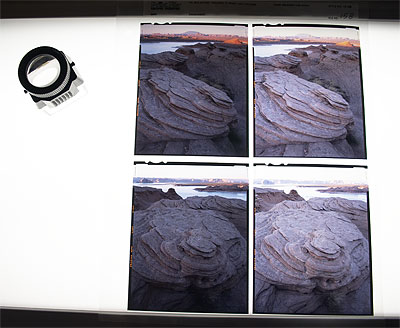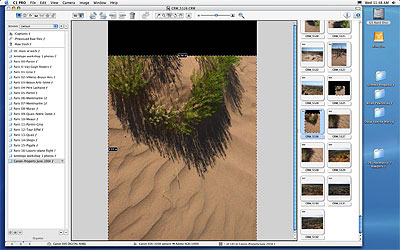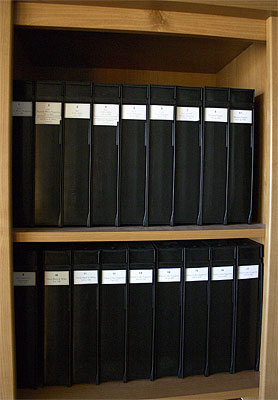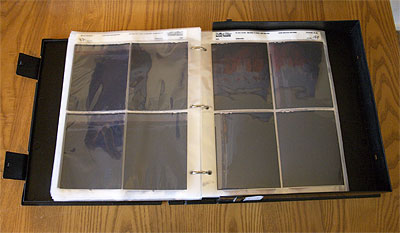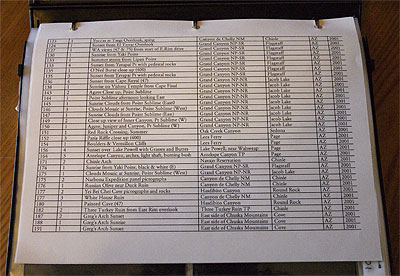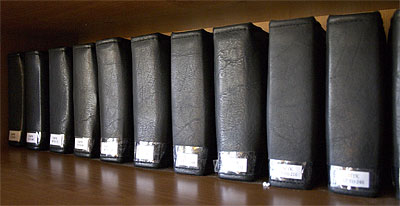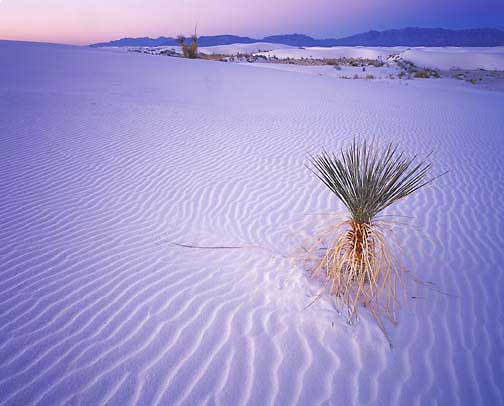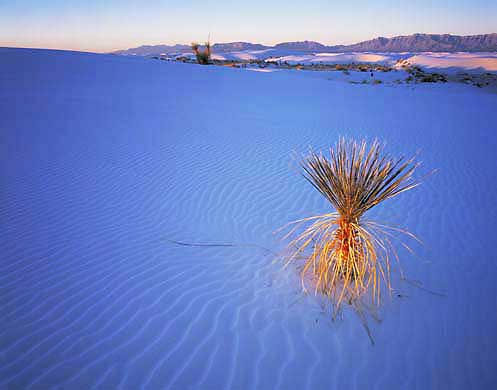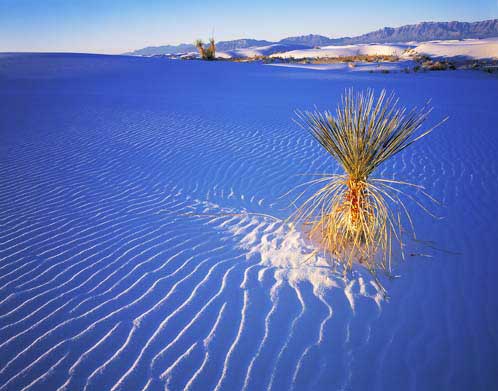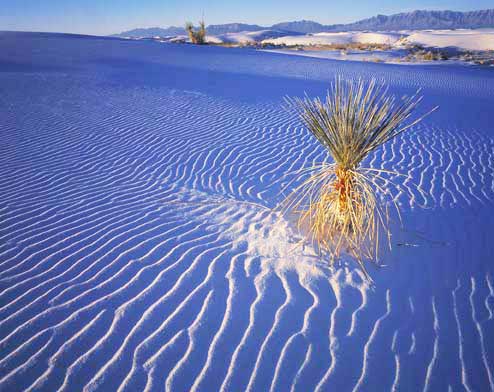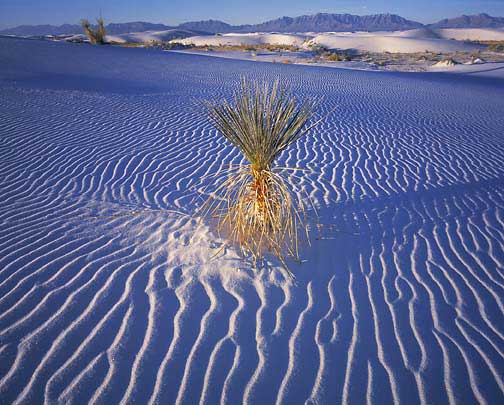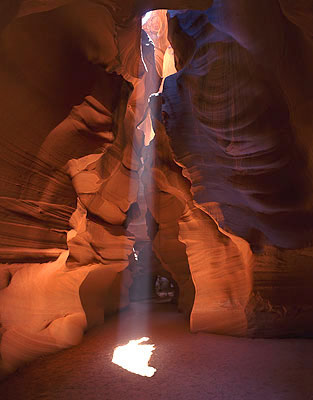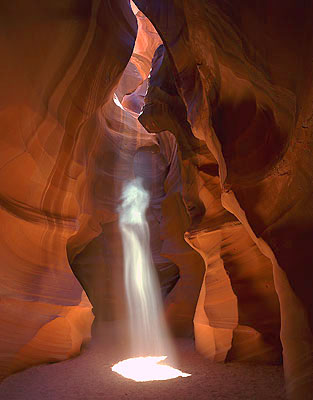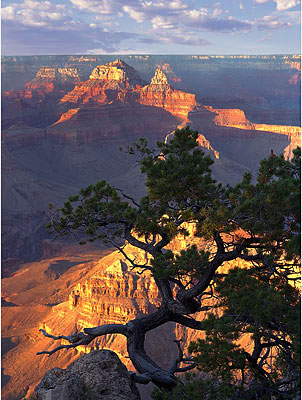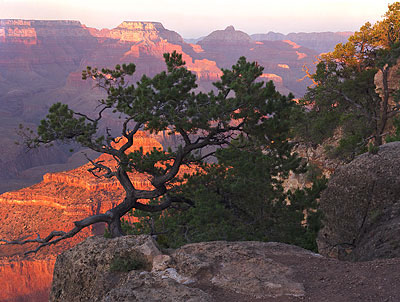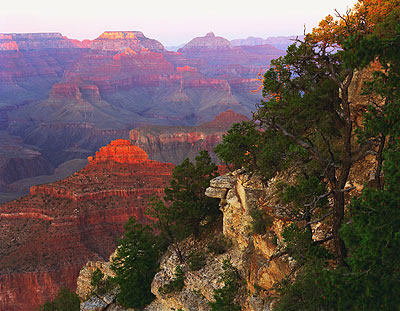How to Decide Which Photographs Are Keepers
and Which Ones Are Not
Article and Photographs by: Alain Briot
Alain Briot is one of the most successful landscape photographers working
in the U.S. today. He was educated at the Ecole des Beaux Art in Paris,
has a Masters degree in Fine Art, and is currently working on his Phd.
1 — Keepers or Not Keepers?
Keepers. A photographer’s term for photographs we like enough to keep them in our permanent files and print them.
But how do you decide which photographs are good enough to be kept around or good enough to be shown to others, printed or exhibited? I receive numerous emails asking me this very question. It seems that many who ask this question believe there is some sort of infallible test which allows photographers in the know to somehow “weed out” the bad photographs and select the good ones, without faltering, without hesitating, knowing exactly how successful any given image will be with the public.
Well, let me start this article by saying that “it ain’t so.” I wish it was but it is not that simple. Why? That is what this article not only aims to explain but also aims to help you with. Read on!
2 — Which Ones are Good, Which Ones Are Bad?
“That is a very good question,” as some of my university professors said when they didn’t know the answer to a question. The fact is that what constitutes a good photograph and a bad photograph can be somewhat elusive. There are ways to narrow down the search, to remove the ones that are definitely not up to the task, but the process is neither clean nor linear. Selecting photographs isn’t exactly like tallying up the score on a multiple answer test. It is eventually an aesthetic decision and aesthetics do not follow mathematical formulas.
3-The Process I Follow
A — “Weeding”
Let me walk you through the process I follow as a way to get started on this topic. When I receive a batch of film back from the lab, or when I download images from a digital camera into my raw conversion software, the first thing I look for are images which suffer from irremediable ills: blank frames, totally blurred images, images shot accidentally, images way over or underexposed, etc. These go out first, i.e. they are either thrown in the trash or deleted from my hard disc. To me this process is like weeding out the yard so to speak: let’s get those out of the way immediately and without remorse. They are errors, mistakes, gross negligence, by-products of the creative process, unfortunate accidents, mishaps or other miscalculations.
Once this done I feel slightly better. I do keep bracketed frames, film and digital, and this for several reasons. First, I may want to create composite images of high contrast scenes in which case I will need bracketed exposures of the same scene. Second, certain exposures work well for scanning while others work better for printing and reproduction, hence the need to have bracketed exposures of the same image. Finally, future technology may be able to extract more data than we can extract today from overexposed or underexposed images making it worth it to use that extra bit of storage space to preserve this material.
Two aspects of the selection process. On the left, 4×5 transparencies on my light table with the indispensable 8x loupe ready to be used to check for sharpness and to take a close-up look at each image. These 4×5 photographs were created at Lake Powell. On the right a Raw Conversion software interface, in this instance Phase One C1 Pro 3.5 with 35mm digital files. These 35mm images were created in Eastern Arizona. Either way the goals are the same: finding out which images are keepers.
B — Filing
At this point I file my photographs. Developed films are stored in transparent filing pages and kept in Bestfile binders. Digital files are burned to DVD. Two copies of each DVD are made, each kept in a different physical location for maximum security.
I find it important to file film and digital files immediately for several reasons. First, with films, dust is a huge problem so the sooner my films are in slide pages and in dust-proof binders the sooner they are protected, as much as possible, from dust. With digital there is always the chance that a file is accidentally deleted or overwritten, or that you suffer a hard disc crash. For these reasons making two back up copies as soon as possible, and keeping them in different physical locations, is the best insurance you can get.
Bestfile film binders in my office
Bestfile film binder opened and 4×5 Print File filing pages
Locations database printout in Bestfile binder. I keep a printed version of this database in each binder.
CD and DVD wallets in my office. Each wallet holds 24 discs. The discs numbers are on each wallet and each disc is searchable via Disc Catalog software. I started by backing up all my digital files on CD’s before upgrading to DVD’s in 2003. Each disc has a number and each disc wallet carries a label with the numbers of the discs stored inside.
Filing is an important process. For me filing serves two main purposes. First, it guarantees that my originals are protected from damage and from dust. I currently use Bestfile binders for film originals because they are sealed binders. Second, efficient filing makes finding any given image quick and easy. To reach this goal I use a database listing the film file page number, the location where the photograph was taken, the date each photograph was taken, and other pertinent information. I keep a digital version of this database on my computers and a printed version in each Bestfile binder. I also keep a digital catalog, using Extensis Portfolio cataloging software, of all my digital images. Finally, I keep a virtual catalog of all my CD’s and DVD’s on each of my computers. Searching any of these databases or catalogs, based on what I am looking for, enables me to find any image within 5 minutes or so. Finding an image in a timely fashion is crucial to me since I receive orders for specific images daily and I have to find these images within a collection which, currently, consists of over 50,000 images.
C — Selecting
The third part is the hardest part. I now have to decide which images are my favorites, which ones I think are the best and which one I think are second rate. In other words it is now up to me to decide what is good and what isn’t.
Let me start by saying that the fewer images I have to look at the easier the process is. This seems to be self evident and in a sense it is. However, the number of images I have to review out of a single batch is directly related to the camera format I used. The quantity of images I shoot is inversely proportional to the film format I use. In other words, the larger the format, the smaller the quantity of images. This makes reviewing and selecting 4×5 images much easier and faster than 35mm images. Why am I saying all this? Because if you find the selection task arduous, if not nearly impossible, you may want to consider moving up to a larger format.
4- My Selection Criteria
Well, so far I haven’t answered the question of how I select images yet. That is because a selection can only be made according to a criteria and so far we have not yet discussed what this criteria may be.
A criteria is a list of things to look for in an image, or a list of goals an image must reach. Without a criteria making a selection beyond technical excellence is not feasible. We need something to go by and this cannot be just that the image is technically good. Furthermore, as we have just seen, at this stage in the process only technically good photographs are left.
So what do we go by? Well, first there has to be a purpose for taking photographs. If you have a purpose, the photographs that meet this purpose, and which are technically good, will be keepers.
The best is to look at the different criteria I am currently using as examples. As you read these criteria keep in mind that, over the years, my criteria and my focus have changed and that they will continue to change in the future.
A — Positiveness
Since the beginning of my involvement with landscape photography my overall criteria has been to focus on the positive aspects of the world. This is why I do not photograph poverty, misery, gloom, depressing scenes, etc. This focus is present in each of my landscape photographs. In terms of selection, I will purposefully reject images that are gloomy or depressing and select images that are inspiring and uplifting. Arthur Comte, father of Positivism, would be pleased.
B — Fresh Images
I also aim at creating images that are different not only from the images created by other photographers but also from the images I created previously. For example, one of my current goals is to create a different photograph each time I visit a place I have previously been to. Therefore, in selecting which photographs are the keepers from a specific shoot at a location I have visited previously, I will purposefully reject images that are similar, or nearly similar, to images I have created in the past. These images that I will reject will most likely be technically excellent. However, they do not meet my current aesthetic criteria.
C — A Single Image From a Specific Location
One of my current goals is to cover a number of specific locations and assemble a collection of images each one representative of how I perceive each location. I regularly visit specific locations for the sole purpose of bringing back a single image from this location. Of course, I will shoot many photographs during my photographic expedition. However, when looking at my film and digital files to decide which are the Keepers, I actually look for a single image.
D — Multiple Photographs with the Same Composition
In this endeavor I often find myself taking multiple photographs of the same scene with the same exact composition. In this situation the only changing variable is the light. An excellent example of this situation is my December 2001 Sunrise shoot at White Sands National Monument where I exposed about 40 double 4×5 film holders without changing the composition, camera position or lens except for the very last exposure. This shoot is described in my Briot’s View article on lula.wpengine.com“Seeing the light, Sunrise at White Sands” as well as on the Luminous Landscape Video Journal number 2. At the time I wrote this article I had narrowed the selection to 5 keepers. Several months after the article was published I selected a single keeper from this shoot and added it to my Portfolio Collection.
White Sands Sunrise #1
White Sands Sunrise #2
White Sands Sunrise #3
White Sands Sunrise #4
White Sands Sunrise #5
All five images were created with a Linhof Master Teknica 4×5, Schneider 75mm lens, and Fuji Provia 100F film.
These five photographs are the five original keepers from my White Sands Sunrise shoot in 2001. This selection was made out of the forty 4×5 originals I took that morning. About 9 months later I narrowed my keeper selection down to White Sands Sunrise #1. I went from 40 to 5 to 1. I still like the other 4 images and may add a second image to my selection because #5 is very attractive to me right now. Notice that I changed the camera position slightly for #5.
E — Images Which Reveal Themselves Over Time
I make my living selling fine art photographs in multiple sizes, with an emphasis on very large photographs, 40×50 and 40×120. These photographs are designed to decorate homes and offices where they will be displayed for many years. With this goal in mind, when selecting the keepers, I look for photographs that can sustain the viewers’ interest for extended periods of time. I look for photographs that can stand up to years of viewing without becoming boring, or repetitive, or clichés. I am not looking for an image which will make an immediate impact, such as is the case with advertising images. Instead, I am looking for images which grow on the viewer, so to speak, images which become more and more enjoyable as time goes by and viewers become intimately familiar with them. I look for images that reveal themselves over time, rather than images that make a quick, short lived impact.
5 — Technical Excellence is Not an End in Itself – To Make a Final Selection an Aesthetic Focus is Needed
To decide which of my photographs are keepers, and to move beyond technical considerations, I had to address the fundamental questions all great photographers have, at some point, had to address. These questions were, and still are, “Why do I take photographs?” “What do I want to express in my photography?” “What is my main reason for creating the images I am now reviewing?” and so on. Without such questions, and without answers to these questions, I would be unable to select my keepers on any other basis but technical quality alone.
Of course, my criteria are designed to help me reach my current goal which is, first and foremost, to create images intended to be displayed as art. If my goal was to shoot images for stock photography, or for publication, or for use for commercial purposes on various objects, my selection criteria would be different. Therefore, your criteria will most likely be different depending on the intended use for your work.
6 — Your selection Criteria
Selecting a criteria, a focus, an intended purpose and use for your work may be difficult. It may be difficult because, first, you may not want to use your work for a commercial purpose. In this case, you can remove all commercial uses of your work from your list of possible criteria. This will definitely make the job easier since the list is shortened considerably.
If you intend to use your work for commercial purposes the short list I have above, at the end of section 5, is a good place to start. You can see additional commercial uses by reading my article on Selling (link).
If you do not want to use your work commercially, a different set of criteria is available to you. These criteria are essentially based on aesthetic considerations. I am listing a number of possibilities below. Keep three things in mind as you read through this list:
First, the list below is not incompatible with a list of commercial uses for your work. In fact, these two lists can be merged to some extent.
Second, your criteria will usually need to be selected before you start your next shoot. Only then will you be able to purposefully look for photographs that meet the goals set by your criteria.
Third, these are only guidelines. Your actual criteria may include some of these suggestions or be entirely different.
Here are some possibilities to help you work out your own criteria:
– Create photographs that will be matted, framed and displayed
– Create photographs that will be offered for sale
– Create a body of work covering a specific number of different locations, with one keeper per location
– Create a collection of sunset (or sunrise) photographs
– Create a collection focused on a specific theme such as the four seasons, water, movement, trees, etc.
– Create a series of black and white (or sepia, or color) photographs
7— Photography Skills Enhancement Exercises
As in each article in this series I am including a list of Photography Skills Enhancement Exercises. I know for many of you this list is the highlight of each article. I also know that many of you conduct these exercises faithfully.
Exercise 1 – Focus and Criteria
Set up a specific goal for your next shoot. Write this purpose down on paper as precisely as possible. Go as far as setting a specific number of photographs you want to bring back from this shoot. Think of it as an assignment which is handed to you by an editor, a stock agency, a gallery, a customer, etc. You are to complete this assignment in a specific time, with a specific number of images in mind. Go out and do it then edit the photos carefully, choose the keepers, print them and display them on your walls in your house. Then go back to the written assignment description and see how close you got.
Exercise 2– Popularity Contest
Pull out all the photographs from your last significant shoot. Start by “weeding out” the ones that are technically poor. Then make prints of all the remaining photographs . You don’t have to make very large prints, 8×10’s will work.
Find your 4 keepers among these prints. Make sure these are the ones you like. Put a check mark on the back of your keepers to identify them later on. Use a red pen.
Then take all your prints, including your keepers, and show them to as many other people as you can. Show them to friends, co workers, clients, acquaintances, complete strangers who don’t mind doing this, etc. Have each person you show them to select their 4 keepers. Place a check mark on the back of the 4 prints selected by each person you show them to. Use a black pen so the checkmarks are a different color than your checkmark.
When you run out of people to show your work to turn the prints around and count the checkmarks on the back of each print. Find out the 4 prints that have the most checkmarks. Put them aside and turn them face up again. Compare these 4 images to your 4 original keepers. Are they the same? Are any of your four original keepers in this final group? The results will most likely surprise you!
Antelope Canyon Light Shaft.
Linhof Master Teknica 4×5, Schneider 75mm, Fuji ProviaAntelope Canyon Light Dance
Linhof Master Teknica 4×5, Schneider 75mm, Fuji ProviaMy original keeper from this shoot was Antelope Light Shaft. However, while response from the public was good it wasn’t as overwhelming as I had hoped. Upon Natalie’s suggestion I printed a second image from this shoot: Antelope Light Dance. The public’s response to this second image was overwhelming and Antelope Canyon Light Dance has since become one of my all time bestsellers as well as one of my Portfolio Collection images.
Exercise 4 — Different Styles, Different Keepers
Maybe your work is traditional at times and cutting edge at other times. Maybe you have two, or more, different styles and these different styles come out at different times depending on how you feel or on how you respond to a specific subject at a specific time. If this is the case this exercise is for you.
Looking at the work from your last shoot, or from several of your recent shoots, make two selections.
First, make a selection of your best traditional images. These are images which do not “go against the grain” so to speak. Images that are done in a classical style, which do not break any rules and do not stretch anyone’s sense of taste.
Second, make a selection of your best “radical” or cutting edge images. These are images which break the rules in a way, images which are surprising, uncommon, new, personal.
Keep these two selections separate and show them to people as two separate groups. Pay close attention to the kind of response each group of photographs receives. You will learn a lot from the response from your audience.
Pinon Pine and Clouds at Sunset, Yavapai Point, Grand Canyon National Park
Pinon Pine at Sunset, Yavapai Point, Grand Canyon National Park
Sunset from Yavapai Point, Grand Canyon National Park
All three images were created with a Linhof Master Teknica 4×5, Rodenstock 210mm lens, and Fuji Provia 100F film.
These three photographs were created on the same shoot and on the same day. The camera was only moved a few feet for each image and the lens used was the same for all three photographs. These are the only three images I created on this particular day. While all three were taken from the same location, they are so different, both in composition and mood, that I selected all three as keepers.
8 — Conclusion
Eventually the selection process is a gradual, multi stage process. Keepers are what we are left with at the end of this process. As we have seen by studying the process I use, and by looking at my Yucca at Sunrise photograph example, this process often takes place in stages. These stages are as follows:
First, only keep technically excellent images.
Second, narrow the selection down to the photographs which express what I saw and felt.
Third, narrow this selection down to the one image that encapsulates the experience, the place, the feeling, etc. the best.
Fourth, find the images that meet the goals set by your criteria.
This selection process is far from being linear and straightforward. Often, this process makes sudden turns and twists, as my perception of my work changes or is affected by the response from my audience.
At any rate it is important to remember the following 4 points:
1 — Photography is art and art is subjective. Therefore photography is subjective and so is the process of selecting our best work from any given photography shoot.
2 — To remove some of this subjectiveness you can involve other people in the selection process by asking friends, relatives and other photographers for their opinion.
3 — Eventually, we cannot be both artists and critics. As the saying goes: “Critique is easy while art is difficult.” Therefore, our job is to do the difficult part and leave the final decision as to the value of our work to our audience. This means we need, first, to know who our audience is and, second, to trust our audience’s choice.
4 — Finally, we need to retain artistic license in our final selection. Knowing what others like and dislike, and knowing how our audience reacts to our work, does not mean giving up our personal artistic beliefs and taste. The final cut is up to us and us only.
This last fact is what makes all the difference between selecting which images from a given shoot are keepers and putting together a portfolio of what we consider our best work. How to assemble a portfolio is the subject of the next article in this series. In this article I will expand on the 4 final points I made in this conclusion. If you have questions about these four points, or about any aspect of this article, be sure to email me, or be patient and wait for the next article in this series. Once again, as with the previous installments, this series is a suivre . . .
The Alain Briot Portfolio Collection
If you want additional examples of my selection process take a look at the Porfolio collectionon my website. This collection, which is built from the Print of the Month Special offer, is a selection of my favorite work which is built over time by selecting one photograph each month.
Alain Briot
Sonoran Desert, Arizona
June, 2004
© 2004 Alain Briot
Beaux Arts Photography
http://www.beautiful-landscape.com
You May Also Enjoy...
Photographing the Eyjafjallajökull Volcano in Iceland
Eyjafjallajökull, NightBack in late March of 2010, I became aware that there was a spectacular eruption under way in Iceland. I immediately changed my plans
Phase One H25 Review
This brief hands-on field review is part of a larger series of ongoing articles and reviews ofmedium format digital backs. If you have not already
